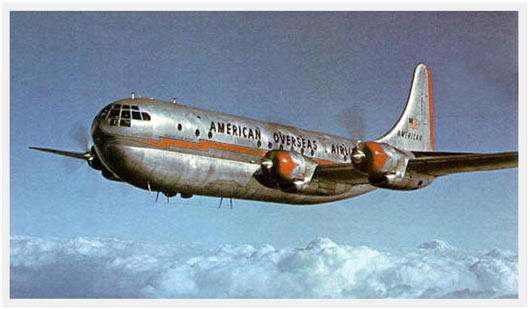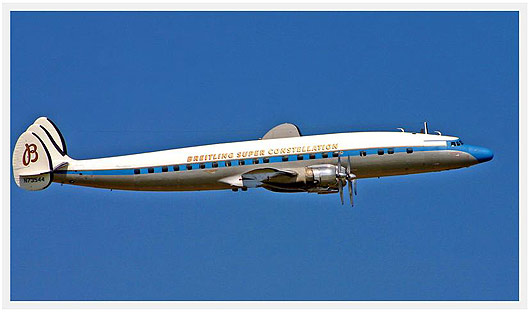
Vote until 4-16-10 in the Retro Airliner Design Contest
Calling all dreamers! You’ve got 2 weeks to draw up the perfect 4-engine (piston) airliner for today, as tho it was 1949 all over again.
All it takes is one simple drawing to enter, and then a poll after the deadline will determine the winner! (full rules below)
The really awesome video of the Constellation engines breathing fire that I posted a couple days ago (2nd post down from this one) has sparked a crazy idea. What if it made sense to build an updated and fully modern radial engine, something like the huge Wright R-3350 or the Pratt & Whitney R-4360, and then put 4 of ‘em on a thoroughly modern airframe… what would that look like?
At first thought it seems silly, but the more you realize how much cheaper those engines would cost, it might not be all that crazy. Plus, as I’ve said before, it seems a lot of people would ride in a 400 mph airliner if it was significantly more comfortable than the cattle cars of today. Ok, it's still probably a crazy idea, but it might at least make for a really interesting design exercise.
I’m really hoping there’s some dreamers out there that’ll play along with this. You can be sure that I’ll have an entry, but I really need some more doodlers to join in. If all you can do is draw on a napkin, that’s cool… and if you’re a hot shot with graphics or CAD - go for it! This is for anyone and everyone to get in on.
The Constellation, DC-7 and the Stratocruiser are all pictured here to give a little historical reference. YOUR design might pick up on 40’s era design cues, or you might wanna go off in a totally different direction. But, to win, you’re probably gonna want to design a truly beautiful airplane. In that sense, the Connie is definitely the mark to hit. An airplane that inspires people to want to ride in it is what I’m hoping for. But again, YOUR design should be nothing like the Connie, it should just be gorgeous like the Connie : )
The Rules:
1) One design per person
2) Must be an original design/drawing
3) Photoshopping existing airplane parts not allowed
4) You can provide multiple views of the design, but only 1 'side' view required to enter
5) Design must have 4 engines (large radials swinging big props!)
6) Deadline to submit is Thursday night 4-8-10 at midnight (you can submit your design anytime before the deadline)
7) Please submit your drawing as a jpg file (scanned napkin drawing or fancy drawings)
8) No prizes, just bragging rights : )
9) Poll that will be put up Monday 4-12-10 and end Friday 4-16-10 will determine winner
More rules or additions may be added along the way. Remember this is all for fun... and I also reserve the right to reject really crappy entries : )
Email me if you have any questions. Dream big, dream loud, dream fast!


 Tuesday, March 30, 2010 at 06:51PM
Tuesday, March 30, 2010 at 06:51PM  Martt |
Martt |  Post a Comment |
Post a Comment |  WWI,
WWI,  engine,
engine,  historical,
historical,  military,
military,  video
video  Email Article
Email Article 





















































































